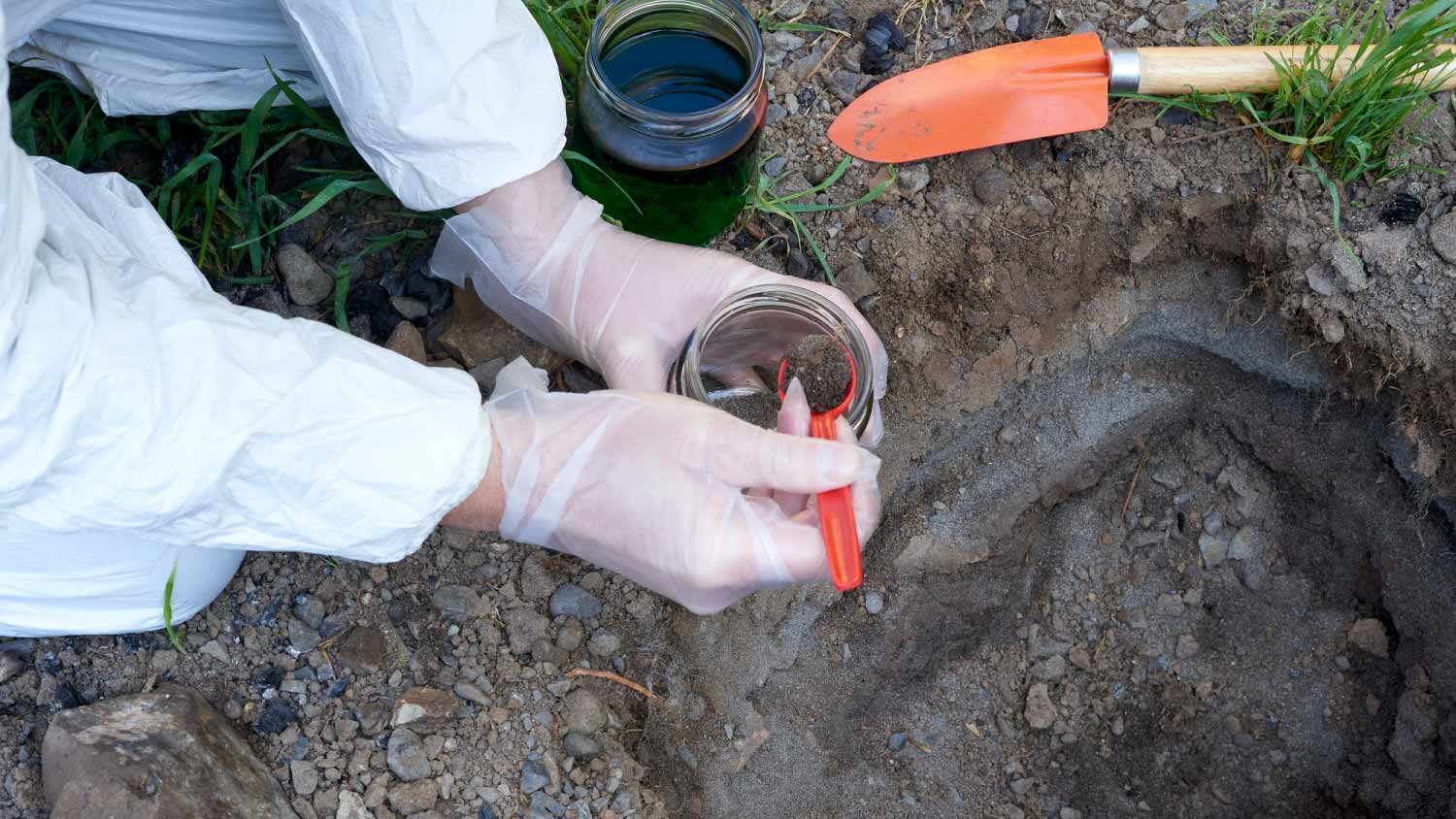When Is the Best Time to Soil Test?
Get the dirt on the right time to test your soil


Fall is the best time to do a soil test.
Soil test timing can be affected by temperature, precipitation, and lab testing time.
Soil tests for different purposes, like septic suitability, can be conducted throughout the year.
If you’re looking to make the most of your yard, soil testing can be a helpful tool. Soil testing can measure the nutrient levels in your soil, help you cultivate soil that’ll grow healthy grass and plants, and even determine if your yard is suitable for a septic system. But knowing when to soil test can help you get the most useful results. Learn when the best time to soil test is, and how to time your soil test just right based on weather conditions and more.
The Best Time to Soil Test
In most cases, the best time to test soil is in the fall. Weather conditions are optimal, the ground isn’t too wet to collect a useful sample, and the timing is right to formulate a fertilizer and soil amendment plan to give you optimal spring growing conditions. You can test soil throughout the year, but temperature and heavy precipitation can affect the soil sample, and testing too close to the growing season won’t leave you enough time to apply the necessary soil amendments.
Factors That Affect Soil Test Timing
Timing a soil test correctly depends on various factors. The condition of the soil due to temperature and precipitation plays a big part, as does the reason you’re testing the soil, but you also want to be able to get timely results from the lab, which is more difficult during certain seasons.
Precipitation
Taking a soil sample from soggy ground can make it difficult to get a good sample and accurate results. Rather than collecting a sample during the rainy season, which for many temperate climates is in the spring and early summer, you’ll want to wait until the bulk of the precipitation has passed in the fall.
Lab Testing Time
Soil testing labs are often busiest in the spring when many homeowners and farmers send their samples for testing. Testing in the fall means shorter wait times, so you can get your results and start planning and applying your soil amendments to give them plenty of time to start working before spring.
It's important to test multiple soil samples from different parts of your property before building. Different areas can have different makeups, so testing in multiple areas can help identify variability in soil conditions.
Soil Test Purpose
The reason you’re testing your soil also matters. Unlike a nutrient-measuring soil test, a perc test is a soil test to determine if the composition of the soil can support a septic system. The best time to do a perc test isn’t necessarily in the fall—these tests must be conducted prior to new home construction, so they take place all year long. Failing a perc test can throw a wrench in your construction plans, so it’s best to do these tests early in the building process.
The Worst Time to Test Soil

Winter and late spring are the least ideal times to test your soil. Winter soil tends to be dry, cold, and hard, and it can be difficult to collect a good sample. Soil samples from frozen ground don’t give a good representation of the soil’s condition and nutrients, so they’re less useful than samples collected in the fall. Late spring tends to have the heaviest precipitation, which can make collecting a good soil sample difficult. It’s also well into the growing season, so it can be too late to add soil amendments to improve soil conditions.
Cost to Test Soil
A lawn soil test costs an average of $20 to $100, and more involved testing that measures things like heavy metals, contaminants, or soil fertility can cost $50 to $200 or more. A perc test can cost an average of $750 to $1,850, depending on local regulations and the size of the potential leach field.
DIY vs. Hiring a Pro
A basic lawn soil test is a straightforward DIY that most homeowners can easily perform. Following the instructions on the testing kit, you’ll collect a sample and then send it to a lab for analysis. If you need to measure ground contaminants or need a soil test before building, contact a local soil testing service to collect and analyze the sample correctly. If you’re installing a septic system, find a soil tester who conducts perc tests to ensure the test complies with local regulations.
Frequently Asked Questions
Annual soil tests can help you have a healthy and thriving lawn. Test your soil at the same time every year so you have an accurate record of the soil in similar conditions. Testing your soil yearly allows you to fine-tune your soil amendments and fertilizer plan so you’re always giving your yard exactly the nutrients it needs.
For the most accurate results, use a soil test kit that requires you to send your sample to a lab for analysis. DIY kits that give results on the spot are less accurate and often provide limited information compared to lab tests.
Lab results from soil tests can take anywhere from five days to three weeks, depending on how busy the lab is, the type of tests being run, and transit time to the lab. Check with the lab to find out turnaround time for results as well as specific instructions to ensure your sample arrives in good condition for testing.





- Carpentry
- House Framing Companies
- Baseboard Installation
- Subcontractors
- Pole Barn Builders
- Elevator Companies
- Grab Bar Installation
- EV Charger Installer
- Caulking Services
- Walk-In Tub Installers
- Attic Ladder Installation
- Bathroom Fan Installation
- Bathroom Vanity Installation
- Tub to Shower Conversion
- Balcony Contractors















